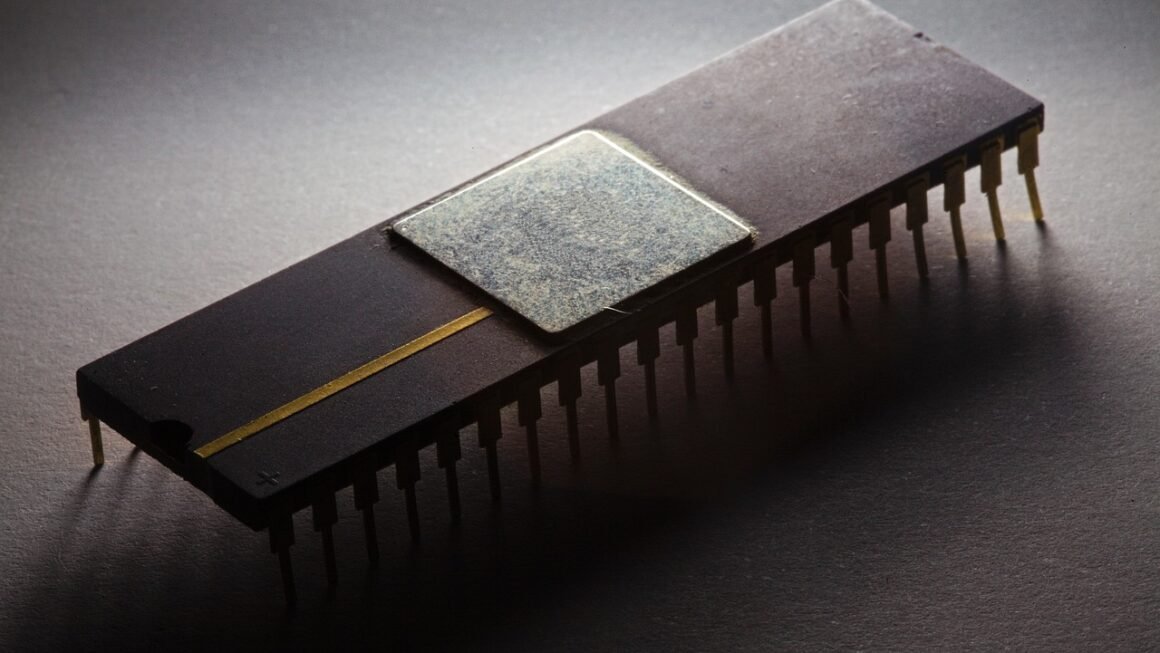Robotics has rapidly evolved from science fiction to a cornerstone of modern industry and daily life. From automated manufacturing lines to intricate surgical systems, robots are transforming how we live, work, and interact with the world around us. This guide will delve into the core aspects of robotics, exploring its applications, components, future trends, and impact on society.
What is Robotics?
Defining Robotics
Robotics is an interdisciplinary field that combines engineering, computer science, and other disciplines to design, construct, operate, and apply robots. It encompasses the development of machines capable of performing tasks automatically or with minimal human guidance. Unlike simple automation, robotics focuses on creating intelligent systems that can sense, plan, and react to their environment.
Key Components of a Robot
Every robot, regardless of its application, typically consists of the following core components:
- Actuators: These are the “muscles” of the robot, providing the power for movement. Examples include electric motors, hydraulic cylinders, and pneumatic actuators.
- Sensors: Robots use sensors to perceive their environment. These can include cameras (for vision), microphones (for audio), force/torque sensors, proximity sensors, and encoders (for position and velocity).
- Controllers: The controller is the “brain” of the robot, processing sensor data and controlling the actuators. It can be a microcontroller, a PLC (Programmable Logic Controller), or a more powerful computer.
- Power Source: Robots need a power source to operate, typically batteries, electrical mains, or hydraulic/pneumatic power systems.
- Mechanical Structure: The physical structure of the robot, including its frame, linkages, and end-effectors (tools).
Types of Robots
Robots come in various forms, each designed for specific tasks:
- Industrial Robots: Used in manufacturing for tasks like welding, painting, assembly, and material handling.
- Service Robots: Designed to assist humans in various settings, such as healthcare, hospitality, and logistics.
- Mobile Robots: Robots that can move around their environment, used for tasks like delivery, surveillance, and exploration.
- Humanoid Robots: Robots designed to resemble humans in appearance and capabilities, often used for research and entertainment.
- Medical Robots: Used in surgery, rehabilitation, and drug delivery.
Applications of Robotics
Robotics in Manufacturing
Manufacturing was one of the first and most impactful applications of robotics. Robots increase efficiency, improve product quality, and reduce labor costs.
- Welding: Robotic welding is faster and more precise than manual welding, resulting in stronger and more consistent welds.
- Painting: Robots can apply paint evenly and consistently, reducing waste and improving the finish quality.
- Assembly: Robots can assemble products quickly and accurately, reducing assembly time and improving product reliability. For example, in automotive manufacturing, robots assemble car bodies with speed and precision.
- Material Handling: Robots can move materials safely and efficiently, reducing the risk of injury and improving workflow.
Robotics in Healthcare
Robotics is revolutionizing healthcare, offering minimally invasive surgical options, improving rehabilitation outcomes, and assisting with drug delivery.
- Surgical Robots: Enable surgeons to perform complex procedures with greater precision and control. The da Vinci Surgical System is a well-known example.
- Rehabilitation Robots: Assist patients with physical therapy, helping them regain strength and mobility.
- Drug Delivery Robots: Deliver medications directly to targeted areas of the body, minimizing side effects.
- Disinfection Robots: Using UV light, these robots can autonomously disinfect hospital rooms, reducing the spread of infection.
Robotics in Logistics and Delivery
Robots are streamlining logistics and delivery, improving efficiency and reducing delivery times.
- Warehouse Automation: Robots automate tasks such as picking, packing, and sorting in warehouses. Companies like Amazon heavily rely on robotic systems to manage their inventory.
- Delivery Drones: Used for last-mile delivery of packages, particularly in urban areas.
- Autonomous Vehicles: Self-driving vehicles are being developed for delivery of goods and materials over longer distances.
Robotics in Exploration and Research
Robots are invaluable in environments that are too dangerous or inaccessible for humans.
- Space Exploration: Rovers like Curiosity and Perseverance are exploring Mars, collecting data, and searching for signs of life.
- Underwater Exploration: Remotely Operated Vehicles (ROVs) are used to explore the deep sea, conduct research, and inspect underwater infrastructure.
- Disaster Response: Robots can be deployed to disaster areas to search for survivors, assess damage, and deliver aid.
Future Trends in Robotics
Artificial Intelligence and Machine Learning
AI and machine learning are enabling robots to become more intelligent and autonomous.
- Improved Perception: AI-powered computer vision systems allow robots to better understand their environment.
- Adaptive Learning: Robots can learn from experience and adapt to changing conditions.
- Natural Language Processing: Enables robots to communicate with humans in natural language.
Collaborative Robots (Cobots)
Cobots are designed to work alongside humans, increasing productivity and improving safety.
- Force Sensing: Cobots can sense forces and stop if they collide with a human, preventing injuries.
- Easy Programming: Cobots are often designed with intuitive programming interfaces, making them easy to set up and use.
- Flexible Deployment: Cobots can be easily moved and redeployed to different tasks.
Bio-Inspired Robotics
Bio-inspired robotics draws inspiration from nature to design robots with advanced capabilities.
- Snake Robots: Designed to move through narrow spaces, used for search and rescue.
- Insect-Inspired Robots: Small and agile robots that can be used for surveillance and inspection.
- Soft Robotics: Robots made from flexible materials, allowing them to adapt to different shapes and environments.
The Internet of Robotic Things (IoRT)
IoRT involves connecting robots to the internet, enabling them to share data and coordinate their actions.
- Remote Monitoring and Control: Allows users to monitor and control robots from anywhere in the world.
- Data Analytics: Robots can collect and analyze data, providing insights into their performance and the environment.
- Swarm Robotics: Multiple robots can work together to achieve a common goal.
Ethical and Societal Implications of Robotics
Job Displacement
The increasing automation of tasks raises concerns about job displacement.
- Retraining and Education: Investing in retraining programs to help workers acquire new skills needed for the changing job market.
- New Job Creation: Robotics is also creating new jobs in areas such as robot design, manufacturing, and maintenance.
- Universal Basic Income: Some propose a universal basic income to provide a safety net for those who lose their jobs to automation.
Safety and Security
Ensuring the safety and security of robots is crucial.
- Safety Standards: Developing and enforcing safety standards for robots to prevent accidents.
- Cybersecurity: Protecting robots from cyberattacks that could compromise their functionality or safety.
- Ethical Programming: Programming robots to make ethical decisions in complex situations.
Privacy
Robots equipped with sensors and cameras can collect large amounts of data, raising privacy concerns.
- Data Protection: Implementing data protection measures to safeguard the privacy of individuals.
- Transparency: Being transparent about the data that robots collect and how it is used.
- Consent: Obtaining consent before collecting and using personal data.
Conclusion
Robotics is a dynamic and rapidly evolving field with the potential to transform many aspects of our lives. From improving manufacturing efficiency to enhancing healthcare and exploring new frontiers, robots are becoming increasingly integral to society. As robotics continues to advance, it is important to address the ethical and societal implications to ensure that these technologies are used responsibly and for the benefit of all. By understanding the core concepts, applications, and future trends of robotics, we can better prepare for the opportunities and challenges that lie ahead.



